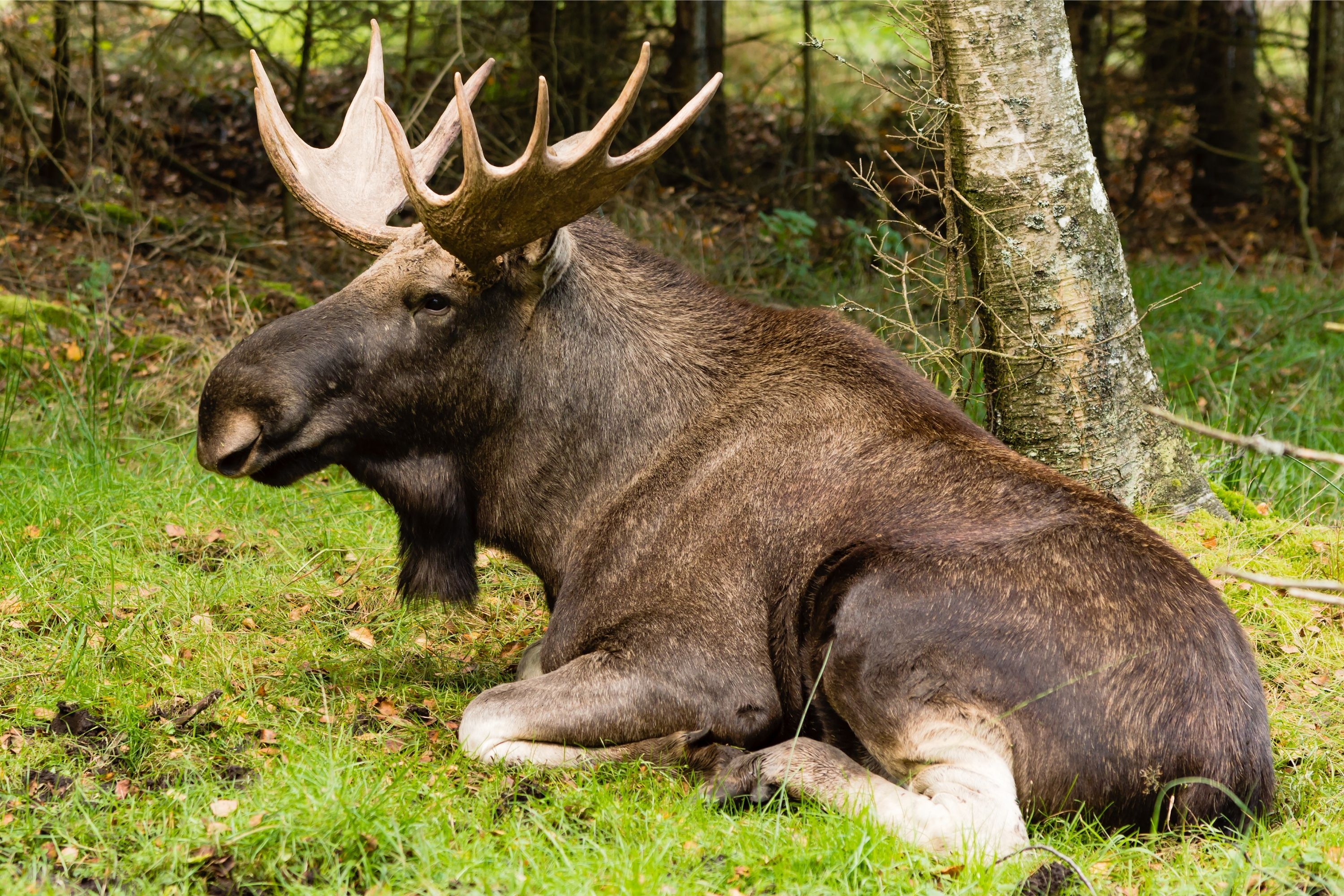Moose
(Alces alces)

Description
The moose (in North America) or elk (in Eurasia) (Alces alces) is a member of the New World deer subfamily and is the largest and heaviest extant species in the deer family. Most adult male moose have distinctive broad, palmate ("open-hand shaped") antlers; most other members of the deer family have antlers with a dendritic ("twig-like") configuration. Moose typically inhabit boreal forests and temperate broadleaf and mixed forests of the Northern Hemisphere in temperate to subarctic climates. Hunting and other human activities have caused a reduction in the size of the moose's range over time. It has been reintroduced to some of its former habitats. Currently, most moose occur in Canada, Alaska, New England (with Maine having the most of the lower 48 states), New York State, Fennoscandia, the Baltic states, Poland, Kazakhstan and Russia. Its diet consists of both terrestrial and aquatic vegetation. The most common predators of the moose are wolves, bears, and humans. Unlike most other deer species, moose do not form herds and are solitary animals, aside from calves who remain with their mother until the cow begins estrus (typically at 18 months after birth of the calf), at which point the cow chases them away. Although generally slow-moving and sedentary, moose can become aggressive, and move quickly if angered or startled. Their mating season in the autumn features energetic fights between males competing for a female. Alces alces is called a "moose" in North American English, but an "elk" in British English. The word "elk" in North American English refers to a completely different species of deer, Cervus canadensis, also called the wapiti. A mature male moose is called a bull, a mature female a cow, and an immature moose of either sex a calf.
Taxonomic tree:







